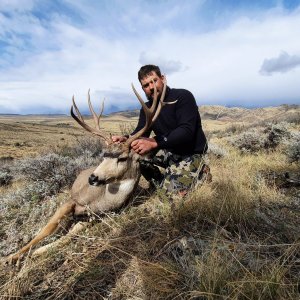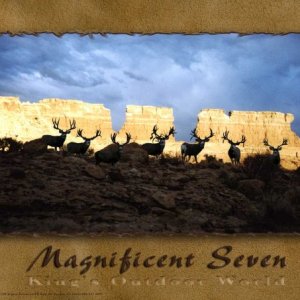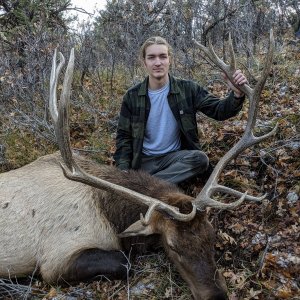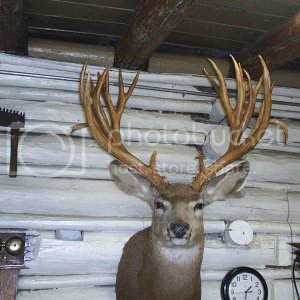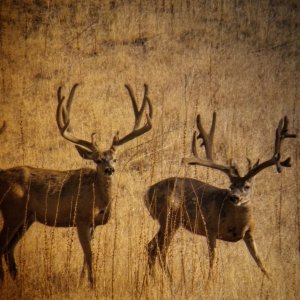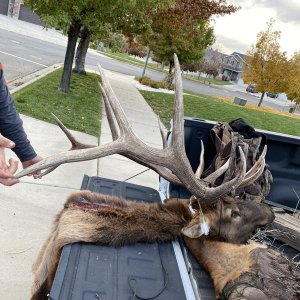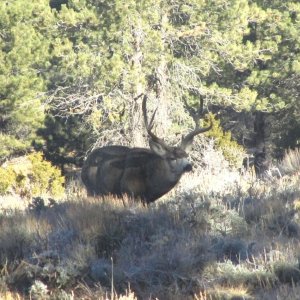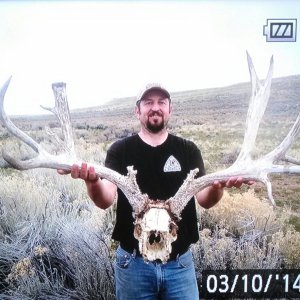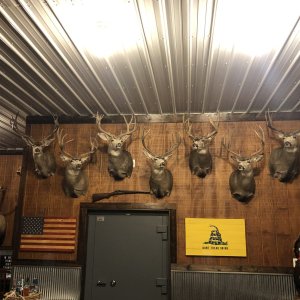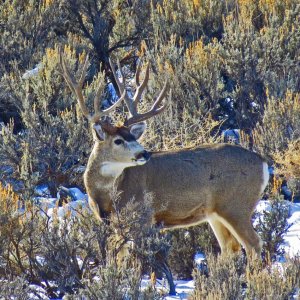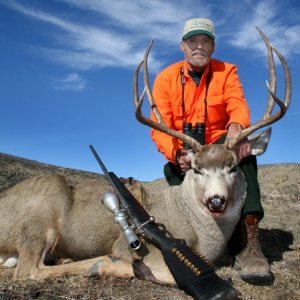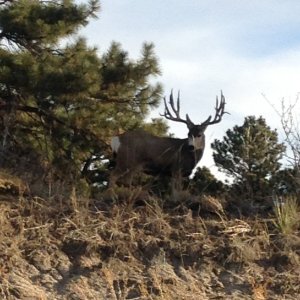I've got a question or two for y'all... This time of year these forums get bombarded with people asking for places to go on their upcoming hunts. While I am always happy to help with areas I'm familiar with, I feel like many people miss out on the whole hunting experience by trying to bypass the time and effort it takes to find quality trophies. To me, scouting is just as much a part of the hunt and brings just as much excitement as the hunt itself. With that, I'm happy to help any new comers get out into the hills and experience what scouting consists of for ME. I realize that the way you scout depends a lot on the time of year you will be hunting, the game you're pursuing, the time you have, distance from the unit, and the list goes on... I would love to hear what everyone's scouting techniques are and how they prepare for the upcoming season. I'm sure there is knowledge out there that can really help a few people have some successful scouting trips as we get closer to the hunts. So, I'm curious to know what some of your scouting techniques are...
I've been archery hunting for 6 or 7 years now and while I still have a TON to learn I finally feel like I'm starting to figure things out. The past 3 years I've focused a lot on spot and stalk style hunting and have had some awesome success. I haven't killed any giant bucks or bulls but I've seen more game and had more opportunities than ever before. Scouting time has become one of my favorite times of year and I love checking out new areas and finding animals to chase come hunting season.
As I primarily archery hunt, my time is spent locating animals in their summer range and figuring out what they do in that transition from summer to fall. I understand the deer a lot better than I do the elk. Maybe some of you can shed some light on scouting elk for pre-rut hunting... Because elk are so mobile they're hard to pattern and you never know where they'll end up once the rut kicks in. Because of this I tend to focus my efforts on finding the cows before the hunt starts. Using this technique last year really paid off. Late July early August I was able to locate a group of 8 or so cows pretty consistently. As we moved into September I watched them, just waiting for a bull to show up. One evening I glassed a nice 5 point bull still in full velvet near the area I had been seeing the group of cows and Less than a week later he had stripped his velvet and was right in the middle of them. I wasn?t able to connect on the bull but learned a lot from my scouting. In my experience with deer they pretty well stay put once they settle in their summer range. They may hop over into neighboring basins now and again but as long as they aren't bothered they will stay in the same area until they strip their velvet. In my experience, once the velvet is gone they become ghosts. I'm sure part of it has to do with the increased hunting pressure as the year progresses. Maybe some can share some techniques on finding deer in the mid stage when their hard horned but the rut hasn't brought them out just yet.
With this year's changes and drawing a tag being half the battle, I decided to try something different and get to know a "lesser" unit (North Slope) that would hopefully provide some fairly consistent draw success. Having mainly hunted the Wasatch front for the past few years I have had to start from scratch. It has been a blast pouring over maps and google earth, talking to the forest service and fellow hunters, and taking a look at my backpacking equipment trying to get everything dialed in. My first trip to the area will be next week and I've got at least one, hopefully two more bonsai trips planned before the opener. Even though I don't have a tag for the Front I have still spent a lot of time up the canyons and I have been able to explore other areas without the pressure to pattern any specific animal. Straying from a honey hole I have come to know so well is what brings me to this post. When scouting a new area for the first time I find the best vantage point that allows me to see the most country but as I have checked out new spots this year I have realized that there are so many little nooks and crannies that disappear when looking from different angles. This leads me to my question as to how you all go about scouting these little pockets. There is so little time in the early morning before the bucks head to bed that it's near impossible to cover all the angles in a scouting trip or two and you run the risk of missing out on the buck of a lifetime. So, how do you cover all the pockets? Will you glass from a different angle each time out or do you change locations throughout the day and glass for the bedded bucks in the afternoon? I'm curious what tactics everyone uses to avoid missing animals in these pockets.
My scouting consists of a couple different components. First on the list is evaluating maps. I look for hard to reach places with little human traffic and identify boundary lines and access points. Once I have found an area that meets my criteria I will look it over in google earth to get a better feel for the vegetation and lay of the land. I will then make a trip to the area to check out points I have made note of such as water, vantage points, camping spots, and possible bedding, feeding and travel routes. This first trip I will generally only take my binos and focus more on the area itself than spotting animals. I'll make note of things that stood out to me while in the field and look over maps and google earth again and again. After that I get serious about finding animals and making note of any thing else that stands out. Scouting can be a lot of fun, especially when you start to find game and really get to know an area. It is also the best way to get in shape for the hunting season IMO.
Anyway, sorry for the long winded post. I never really had a mentor to teach me how to scout or prepare for the season and I spent a lot of time just wandering through the woods, which wasn?t necessarily a bad thing; but I have realized that preparation and scouting makes for a much more successful and enjoyable hunt. Hopefully we can get some good posts and hear some new techniques that can help in finding your next trophy.
I've been archery hunting for 6 or 7 years now and while I still have a TON to learn I finally feel like I'm starting to figure things out. The past 3 years I've focused a lot on spot and stalk style hunting and have had some awesome success. I haven't killed any giant bucks or bulls but I've seen more game and had more opportunities than ever before. Scouting time has become one of my favorite times of year and I love checking out new areas and finding animals to chase come hunting season.
As I primarily archery hunt, my time is spent locating animals in their summer range and figuring out what they do in that transition from summer to fall. I understand the deer a lot better than I do the elk. Maybe some of you can shed some light on scouting elk for pre-rut hunting... Because elk are so mobile they're hard to pattern and you never know where they'll end up once the rut kicks in. Because of this I tend to focus my efforts on finding the cows before the hunt starts. Using this technique last year really paid off. Late July early August I was able to locate a group of 8 or so cows pretty consistently. As we moved into September I watched them, just waiting for a bull to show up. One evening I glassed a nice 5 point bull still in full velvet near the area I had been seeing the group of cows and Less than a week later he had stripped his velvet and was right in the middle of them. I wasn?t able to connect on the bull but learned a lot from my scouting. In my experience with deer they pretty well stay put once they settle in their summer range. They may hop over into neighboring basins now and again but as long as they aren't bothered they will stay in the same area until they strip their velvet. In my experience, once the velvet is gone they become ghosts. I'm sure part of it has to do with the increased hunting pressure as the year progresses. Maybe some can share some techniques on finding deer in the mid stage when their hard horned but the rut hasn't brought them out just yet.
With this year's changes and drawing a tag being half the battle, I decided to try something different and get to know a "lesser" unit (North Slope) that would hopefully provide some fairly consistent draw success. Having mainly hunted the Wasatch front for the past few years I have had to start from scratch. It has been a blast pouring over maps and google earth, talking to the forest service and fellow hunters, and taking a look at my backpacking equipment trying to get everything dialed in. My first trip to the area will be next week and I've got at least one, hopefully two more bonsai trips planned before the opener. Even though I don't have a tag for the Front I have still spent a lot of time up the canyons and I have been able to explore other areas without the pressure to pattern any specific animal. Straying from a honey hole I have come to know so well is what brings me to this post. When scouting a new area for the first time I find the best vantage point that allows me to see the most country but as I have checked out new spots this year I have realized that there are so many little nooks and crannies that disappear when looking from different angles. This leads me to my question as to how you all go about scouting these little pockets. There is so little time in the early morning before the bucks head to bed that it's near impossible to cover all the angles in a scouting trip or two and you run the risk of missing out on the buck of a lifetime. So, how do you cover all the pockets? Will you glass from a different angle each time out or do you change locations throughout the day and glass for the bedded bucks in the afternoon? I'm curious what tactics everyone uses to avoid missing animals in these pockets.
My scouting consists of a couple different components. First on the list is evaluating maps. I look for hard to reach places with little human traffic and identify boundary lines and access points. Once I have found an area that meets my criteria I will look it over in google earth to get a better feel for the vegetation and lay of the land. I will then make a trip to the area to check out points I have made note of such as water, vantage points, camping spots, and possible bedding, feeding and travel routes. This first trip I will generally only take my binos and focus more on the area itself than spotting animals. I'll make note of things that stood out to me while in the field and look over maps and google earth again and again. After that I get serious about finding animals and making note of any thing else that stands out. Scouting can be a lot of fun, especially when you start to find game and really get to know an area. It is also the best way to get in shape for the hunting season IMO.
Anyway, sorry for the long winded post. I never really had a mentor to teach me how to scout or prepare for the season and I spent a lot of time just wandering through the woods, which wasn?t necessarily a bad thing; but I have realized that preparation and scouting makes for a much more successful and enjoyable hunt. Hopefully we can get some good posts and hear some new techniques that can help in finding your next trophy.

